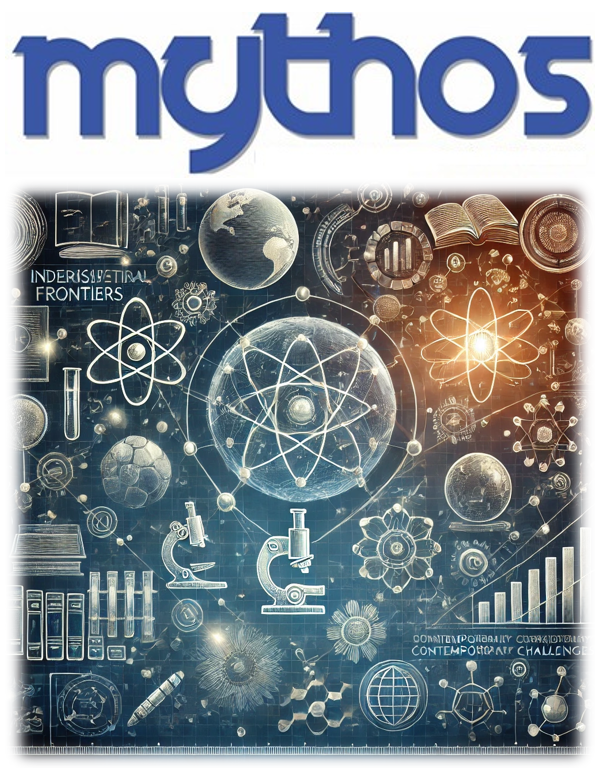MICROBIOLOGICAL ANALYSIS OF AGROBIOLOGICALS USED IN COFFEE PLANTATIONS
DOI:
https://doi.org/10.36674/mythos.v22i1.843Keywords:
microorganisms, Coffee arabica, soil, microbiological analysisAbstract
The soil plays a vital role in agriculture, being frequently enriched with a variety of products not naturally found in the environment to promote both environmental protection and vegetal growth control. Throughout agricultural development, there has been a gradual transition from the use of pesticides to the utilization of bacteria and other microorganisms known as agrobiologicals. These microorganisms act in symbiosis with plants, promoting their growth and protecting the soil. Additionally, they perform various beneficial functions, including nutrient cycling, nitrogen fixation, degradation of pollutants, and solubilization of minerals such as phosphorus, potassium, and sodium. Moreover, they exert biological control over diseases and pests, contributing to the health of the agricultural ecosystem. The aim of this study was to understand the utilization of agrobiologicals and evaluate the microorganisms present in these products, through microbiological analyses, in coffee plantations in the Southern region of Minas Gerais. The results revealed the predominant presence of genera such as Bacillus, Chromobacterium, Beauveria, Isaria, Hirsutella, Metarhizium, and Trichoderma in the agrobiologicals used for coffee cultivation in the region. Considering the potential negative impacts of pesticides on environmental contamination and chemical pollution, the substitution with agrobiologicals emerges as a promising alternative, capable of bringing significant ecological advantages and potentially benefiting public health.
References
Angelo, P. D. S., Sena, M., Moraes, L., De Souza, M. G., Souza, A., & Lozano, J. (2007). Interação antagônica entre Chromobacterium violaceum e Colletotrichum guaranicola, agente causador da antracnose do guaraná. Disponível em: https://bit.ly/4hkRma9
Brito, P. F. D., Gomide, M., & Câmara, V. D. M. (2009). Agrotóxicos e saúde: realidade e desafios para a mudança de práticas na agricultura. Physis: Revista Saúde Coletiva, 19, 207-225. https://doi.org/10.1590/S0103-73312009000100011
Cavalcante, J. K. G., Conte, H., Daquila, B. V., & Caleffe, R. R. T. (2022). Potencial biotecnológico de Chromobacterium subtsugae: uma breve revisão focada no manejo biológico de artrópodes-praga. RevistaIbero-Americana de Ciências Ambientais, 13(3), 200-211. https://doi.org/10.6008/CBPC2179-6858.2022.003.0016
Conceschi, M. R. (2013). Potencial dos fungos entomopatogênicos Isaria fumosorosea e Beauveria bassianapara o controle de pragas da citricultura (Tese de doutorado, Universidade de São Paulo - USP).
Soares, A. C. F., Evangelista-Barreto, N. S., & Marbach, P. A. S. (Orgs.). (2020). Tópicos em microbiologia agrícola. EDUFRB. Disponível em: https://www1.ufrb.edu.br/editora/component/phocadownload/category/2-e- books?download=211:topicos-em-microbiologia-agricola
Ferraz, Helvio G. M. 2019. Método de diluição em placa para contagem de células bacterianas multiplicadas usando tecnologia multibacter®.
Ferreira, Ana Lúcia. 2016. Fungos e bactérias fazem as plantas crescerem mais. Embrapa. Rio de Janeiro. https://bit.ly/41FBp8I
Garcia, S. D., & de Lara, T. I. D. C. (2020). O impacto do uso de agrotóxicos na saúde pública: revisão de literatura. Saúde e Desenvolvimento Humano, 8(1), 85-96. https://doi.org/10.18316/sdh.v8i1.6087
Mariano, R. D. L. R., da Silveira, E. B., de Assis, S. M. P., Gomes, A. M. A., Nascimento, A. R. P., & Donato, V. M. T. S. (2004). Importância das bactérias que promovem o crescimento e o biocontrole de doenças de plantas para uma agricultura sustentável. Anais da Academia Pernambucana de CiênciasAgrárias, 1, 89-111. Disponível em: https://ainfo.cnptia.embrapa.br/digital/bitstream/item/34111/1/AAPCA-V1-Revisao-04.pdf
Meyer, M. C., Mazaro, S. M., & da SILVA, J. C. (2019). Trichoderma: uso na agricultura. https://www.embrapa.br/busca-de-noticias/-/noticia/53541439/fungo-trichoderma-e-aliado-no-controle-biologico-de-doencas-em-culturas-agricolas
Monnerat, R., Montalvão, S. C. L., Martins, E. S., Queiroz, P., da Silva, E. Y. Y., Garcia, A. R. M., & Gomes, A. (2020). Manual para produção e controle de qualidade de produtos biológicos à base de bactérias do gênero Bacillus para uso na agricultura. https://ainfo.cnptia.embrapa.br/digital/bitstream/item/213246/1/documentos-36916.pdf
Moreira, F. M. S., & Siqueira, J. O. (2006). Microbiologia e bioquímica do solo (2ª ed.). Editora UFLA. https://www.esalq.usp.br/departamentos/lso/arquivos_aula/LSO_400%20Livro%20-%20Microbiologia%20e%20bioquimica%20do%20solo.pdf
Neves, P. M., & Hirose, E. (2005). Seleção de isolados de Beauveria bassiana para o controle biológico da broca do café, Hypothenemus hampei (Ferrari)(Coleoptera: Scolytidae). Entomologia Neotropical, 34 (1), 77-82. https://doi.org/10.1590/S1519-566X2005000100011
Oliveira, P. A., Giordian, I., & Baretta, C. R. D. M. (2019). Benefícios da microbiota do solo na agricultura. SB Rural, 11(227), 1–1. https://www.udesc.br/arquivos/ceo/id_cpmenu/1043/rural_227_15526669528945_1043.pdf
Ribeiro, R., Sei, F. B., & Leite, M. S. (2011). Bacillus subtilis: agente de controle biológico e promotor de crescimento vegetal. Jornal do Dia de Campo. http://www.diadecampo.com.br/zpublisher/materias/Materia.asp?id=24104&secao=Colu n
Vasconcelos, J. F., Silva, S. S., Santana, S. F., & Teodoro, A. V. (2015). Eficiência relativa de agrotóxicos, óleo de algodão e fungo Hirsutella thompsonii no controle do ácaro da necrose Aceria guerreronis. Em Anais do V Seminário de Iniciação Científica e Pós-Graduação da Embrapa Tabuleiros Costeiros (pp. 248–253). Embrapa. https://www.alice.cnptia.embrapa.br/alice/bitstream/doc/1028234/1/Eficienciarelativa.pdf
Veloso, C. (2023 Entenda a importância da microbiota do solo e da inoculação de microrganismos. Bloco Verde. https://blog.verde.ag/pt/nutricao-de-plantas/entenda-a-importancia-da-microbiota-do-solo-e-da-inoculacao-de-microrganismos/
Veloso, C. (2023). Preservar a microbiota do solo pode aumentar a produtividade e a rentabilidade da sua cultura? Bloco Verde. https://blog.verde.ag/pt/nutricao-de-plantas/preservar-a-microbiota-do-solo-pode-aumentar-produtividade-e-rentabilidade-da-sua-lavoura/
Downloads
Published
How to Cite
Issue
Section
License
Copyright (c) 2025 Alexsander Eduardo dos Santos Pedro, Gabriel Mendes de Freitas Lisboa, Paula Alves Pereira, Polyana Placedino Andrade, Hadassa Cristhina de Azevedo Soares dos Santos

This work is licensed under a Creative Commons Attribution 4.0 International License.
Since January of 2024, the authors retain the copyright relating to their article and grant the journal Mythos, from FEPESMIG, the right of first publication, with the work simultaneously licensed under the Creative Commons Attribution 4.0 International license (CC BY 4.0), as stated in the article’s PDF document. This license provides that the article published can be shared (allows you to copy and redistribute the material in any medium or format) and adapted (allows you to remix, transform, and create from the material for any purpose, even commercial) by anyone.





























